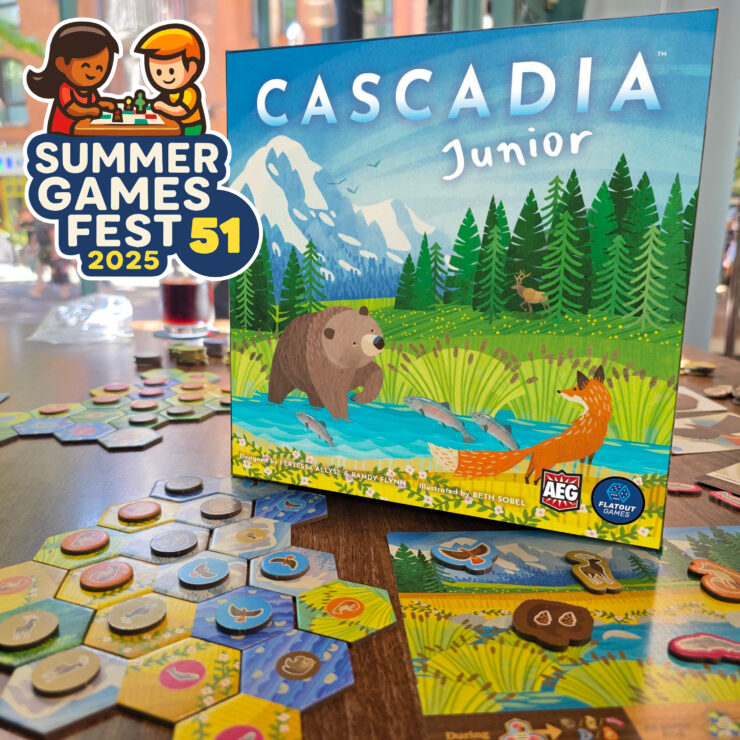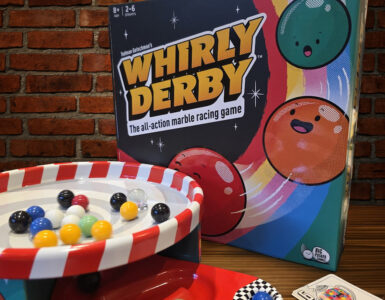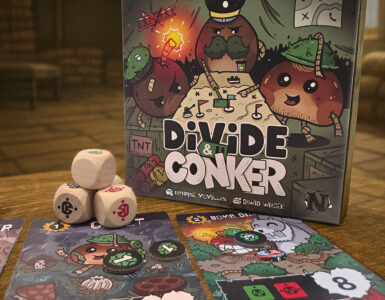Cascadia is a well-loved tile-laying game where you’re matching up habitats and animals, from the same people that brought us the wonderful Calico, which pops up here at Little Board Gamers all the time.
I’m not entirely sure why I’ve never reviewed “grown-up” Cascadia, but here we are with Cascadia Junior — a simplified version that I’ve really enjoyed playing with the younger kids. Let me explain.
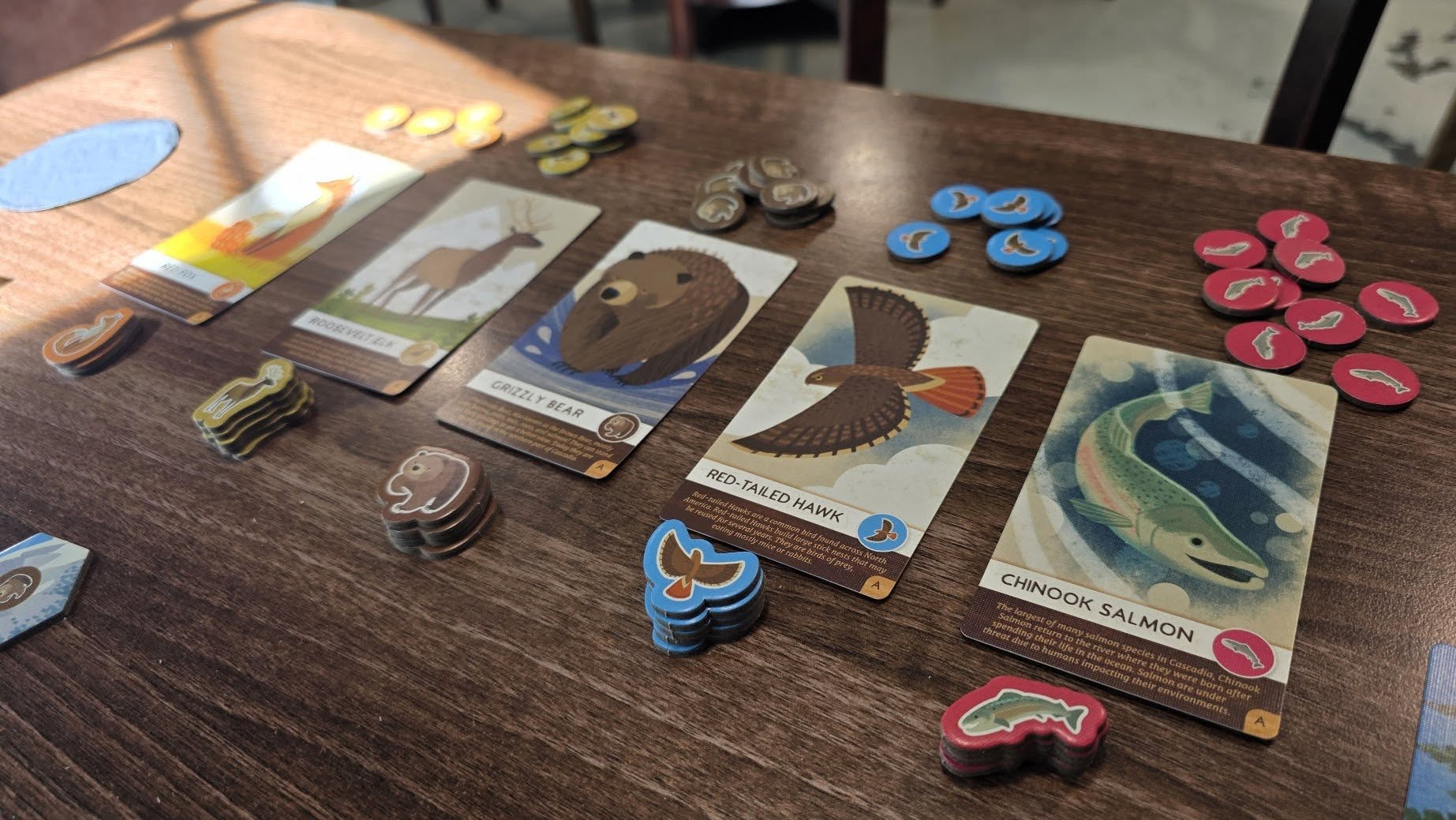
On your turn, you choose a habitat tile and a matching wildlife token from the row in front of you. You add the tile to your growing landscape, trying to match habitats or 3 animals together. Whenever you manage to get three of the same animal connected together, you earn a sighting token. These sighting tokens go onto your panorama board, which gradually builds up a lovely scene as the game goes on. At the end of the game, you also get landscape tokens depending on how many tiles of the same landscape are together.
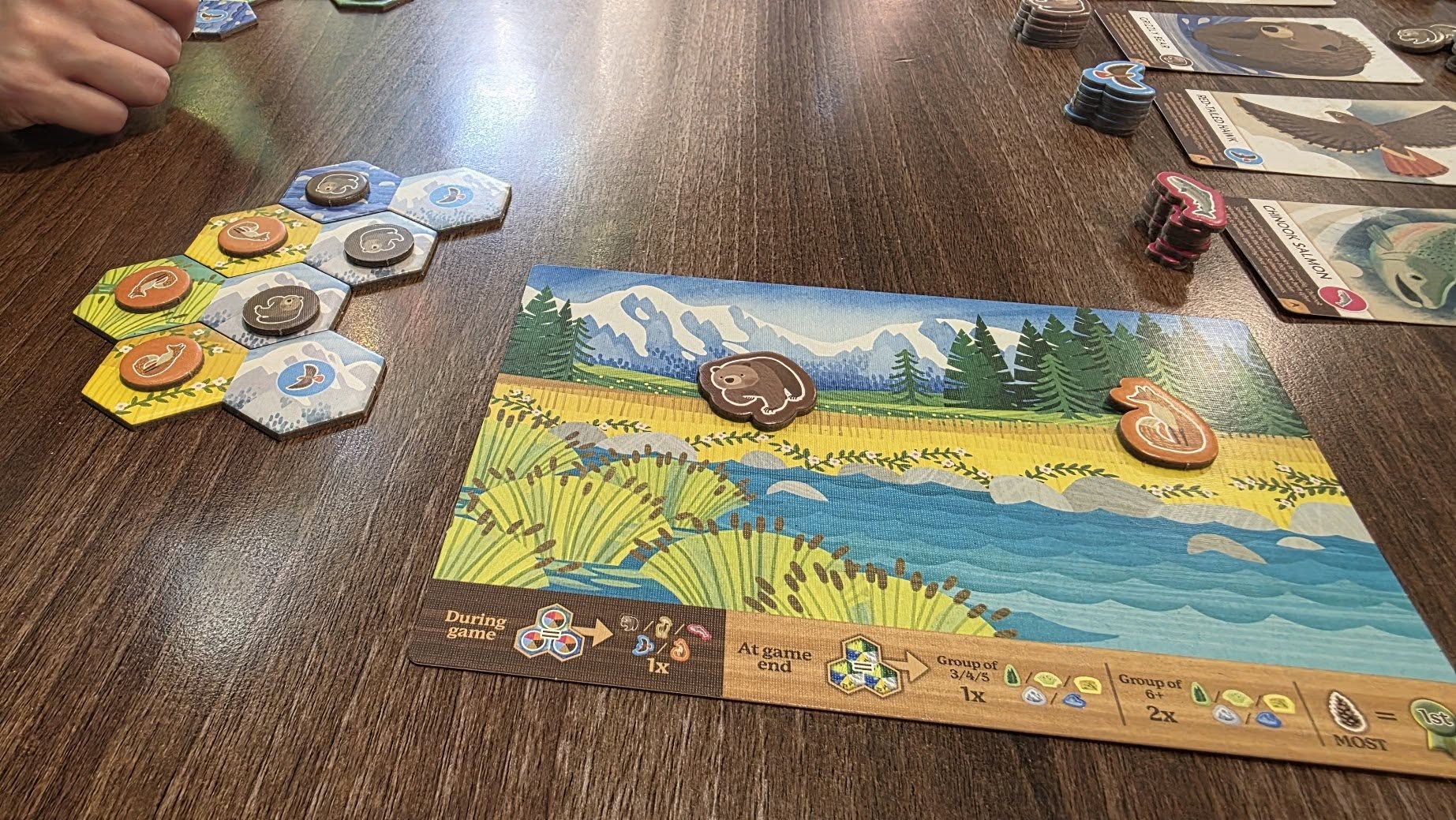
It all works really well, and once you’ve got the hang of it there are also slightly more advanced rules you can try. These add in wildlife scoring cards, where instead of just making trios you’re trying to complete different-shaped patterns for each animal. It’s a nice little step up that bridges the gap between this and full Cascadia.
Now, here’s where things wobble a bit. Each sighting or landscape token you earn is randomly worth one or two pine cones. That means you could work really hard to collect loads of tokens, but if they all turn out to be worth one point you could lose to someone who only picked up a handful of twos. Obviously, this adds a big element of luck, which might be fine when you’ve got three little kids around the table who don’t stand much chance without some help. But in practice my kids didn’t like it, and to be honest neither did I. We had a couple of games where someone got noticeably luckier than the rest, and I know for certain that if one of us had “won” that way against Jack it would not have gone down well!
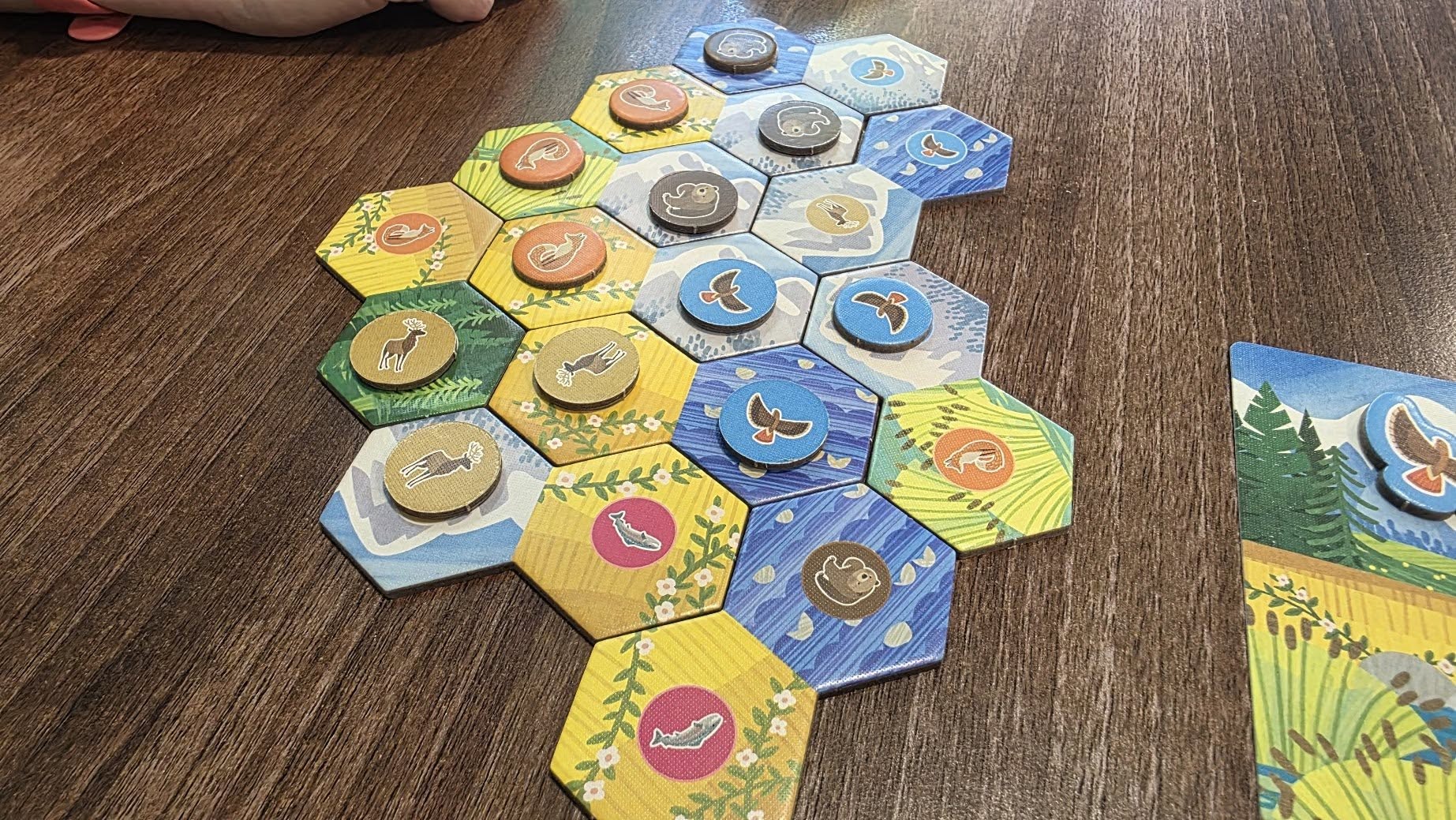
That said, Cascadia Junior is still a really good kids’ game. It’s bright, colourful, and it gets across the idea of tile-laying and set collection in a really fun way. The whole process of earning the tokens and then laying them out into a landscape is a lovely touch. Overall this is a recommendation, especially for anyone looking to move their kids on from Orchard Toys-style games and Snakes and Ladders into something a bit more sophisticated. The only thing holding it back for us is that scoring system — which makes it a “yes, recommend” rather than an “absolutely must-buy.”


